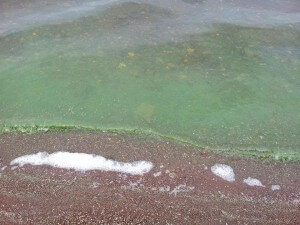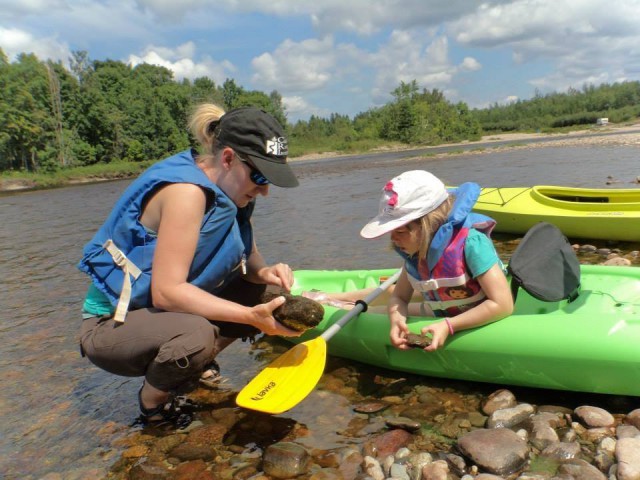
This summer our lakes are making headlines; not for their cool, clear nature but because they are getting sick. Blue-green algae blooms have flared up on Washademoak Lake, Harvey Lake and portions of Grand Lake — three lakes known for their swimming and boating. Except, the Department of Health is advising New Brunswickers that recreating on or ingesting these waters could lead to itchy, irritated eyes and skin and/or gastrointestinal issues and to take caution around these water bodies.
What’s going on? A number of lake groups and associations have been working for a few years now trying to understand the condition of their lakes. They’ve been collecting regular water samples and making observations about oxygen and temperature levels, and have sent their samples to the Department of Environment to be analyzed.
But now groups are concerned they aren’t getting the analyses back from the department, and they say the delay is hampering their ability to make predictions based on the data — such as being able to predict the onset of an algal bloom.
This all rings very familiar. Remember the Water Classification Program?
 In the early 2000s, the Department of Environment started to help increase the capacity and monitoring programs of a number of river and watershed groups in the province. Groups spent years collecting data that was supposed to be used by the department to classify the water quality of rivers across the province. After collecting and submitting data for a few years, however, the groups realized the department had not been holding up its end of the program — it wasn’t enforcing the Water Classification Program put in place to help protect rivers from water pollution.
In the early 2000s, the Department of Environment started to help increase the capacity and monitoring programs of a number of river and watershed groups in the province. Groups spent years collecting data that was supposed to be used by the department to classify the water quality of rivers across the province. After collecting and submitting data for a few years, however, the groups realized the department had not been holding up its end of the program — it wasn’t enforcing the Water Classification Program put in place to help protect rivers from water pollution.
Tomorrow, August 15, 2015, marks the one-year anniversary of the provincial Ombudsman’s public report on the Department of Environment’s management of the provincial Water Classification Program. In his report, Ombudsman Charles Murray noted that the Department’s mishandling of the file — effectively letting it go into limbo for a decade — drove a wedge between watershed groups and the Department.
The same thing could happen as lake groups wait on the department for data on the health of their waters.
Yet, speaking to CCNB last fall, Mr. Murray said he felt strongly there was reason for hope for the Water Classification Program, saying that acting now to enforce the program would be an “opportunity for the Minister of Environment to demonstrate competence, good faith, and to rebuild some bridges of trust between the department and the communities.”
The same philosophy can be applied to what’s happening now in our provincial lakes. As with our many rivers, New Brunswickers have a deep connection to these bodies of water and there are a lot of people working to keep them healthy. The Department of Environment has an important role to play in this, and we need them to wade in with us.
More on the Water Classification program and CCNB’s response to the Ombudsman’s report in August 2014
More on blue-green algae in our lakes

